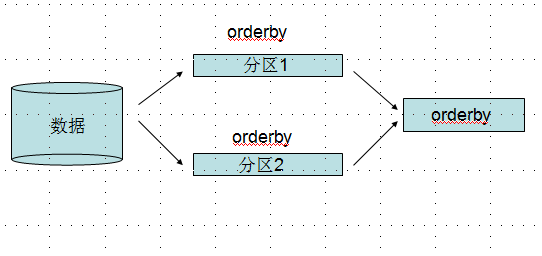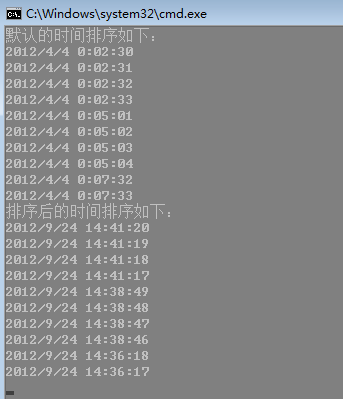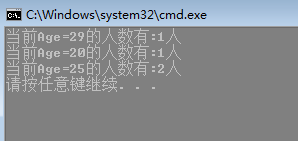并行开发 —— 第三篇 plinq的使用
1:AsParallel(并行化)
下面我们模拟给ConcurrentDictionary灌入1500w条记录,看看串行和并行效率上的差异,注意我的老爷机是2个硬件线程。
using System;
using System.Threading;
using System.Threading.Tasks;
using System.Diagnostics;
using System.Collections.Concurrent;
using System.Collections.Generic;
using System.Linq;
class Program
{
static void Main(string[] args)
{
var dic = LoadData();
Stopwatch watch = new Stopwatch();
watch.Start();
//串行执行
var query1 = (from n in dic.Values
where n.Age > 20 && n.Age < 25
select n).ToList();
watch.Stop();
Console.WriteLine("串行计算耗费时间:{0}", watch.ElapsedMilliseconds);
watch.Restart();
var query2 = (from n in dic.Values.AsParallel()
where n.Age > 20 && n.Age < 25
select n).ToList();
watch.Stop();
Console.WriteLine("并行计算耗费时间:{0}", watch.ElapsedMilliseconds);
Console.Read();
}
public static ConcurrentDictionary<int, Student> LoadData()
{
ConcurrentDictionary<int, Student> dic = new ConcurrentDictionary<int, Student>();
//预加载1500w条记录
Parallel.For(0, 15000000, (i) =>
{
var single = new Student()
{
ID = i,
Name = "hxc" + i,
Age = i % 151,
CreateTime = DateTime.Now.AddSeconds(i)
};
dic.TryAdd(i, single);
});
return dic;
}
public class Student
{
public int ID { get; set; }
public string Name { get; set; }
public int Age { get; set; }
public DateTime CreateTime { get; set; }
}
}
执行的结果还是比较震撼的,将近7倍,这是因为plinq的查询引擎会尽量利用cpu的所有硬件线程
2:常用方法的使用
<1> orderby
有时候我们并不是简单的select一下就ok了,可能需要将结果进行orderby操作,并行化引擎会把要遍历的数据分区,然后在每个区上进行
orderby操作,最后来一个总的orderby,这里很像算法中的“归并排序”。
using System;
using System.Threading;
using System.Threading.Tasks;
using System.Diagnostics;
using System.Collections.Concurrent;
using System.Collections.Generic;
using System.Linq;
class Program
{
static void Main(string[] args)
{
var dic = LoadData();
var query1 = (from n in dic.Values.AsParallel()
where n.Age > 20 && n.Age < 25
select n).ToList();
Console.WriteLine("默认的时间排序如下:");
query1.Take(10).ToList().ForEach((i) =>
{
Console.WriteLine(i.CreateTime);
});
var query2 = (from n in dic.Values.AsParallel()
where n.Age > 20 && n.Age < 25
orderby n.CreateTime descending
select n).ToList();
Console.WriteLine("排序后的时间排序如下:");
query2.Take(10).ToList().ForEach((i) =>
{
Console.WriteLine(i.CreateTime);
});
Console.Read();
}
public static ConcurrentDictionary<int, Student> LoadData()
{
ConcurrentDictionary<int, Student> dic = new ConcurrentDictionary<int, Student>();
//预加载1500w条记录
Parallel.For(0, 15000000, (i) =>
{
var single = new Student()
{
ID = i,
Name = "hxc" + i,
Age = i % 151,
CreateTime = DateTime.Now.AddSeconds(i)
};
dic.TryAdd(i, single);
});
return dic;
}
public class Student
{
public int ID { get; set; }
public string Name { get; set; }
public int Age { get; set; }
public DateTime CreateTime { get; set; }
}
}
<2> sum(),average()等等这些聚合函数的效果跟orderby类型一样,都是实现了类型归并排序的效果,这里就不举例子了。
3:指定并行度,这个我在前面文章也说过,为了不让并行计算占用全部的硬件线程,或许可能要留一个线程做其他事情。
var query2 = (from n in dic.Values.AsParallel() .WithDegreeOfParallelism(Environment.ProcessorCount - 1) where n.Age > 20 && n.Age < 25 orderby n.CreateTime descending select n).ToList();
4: 了解ParallelEnumerable类
首先这个类是Enumerable的并行版本,提供了很多用于查询实现的一组方法,截个图,大家看看是不是很熟悉,要记住,他们都是并行的。
下面列举几个简单的例子。
class Program
{
static void Main(string[] args)
{
ConcurrentBag<int> bag = new ConcurrentBag<int>();
var list = ParallelEnumerable.Range(0, 10000);
list.ForAll((i) =>
{
bag.Add(i);
});
Console.WriteLine("bag集合中元素个数有:{0}", bag.Count);
Console.WriteLine("list集合中元素个数总和为:{0}", list.Sum());
Console.WriteLine("list集合中元素最大值为:{0}", list.Max());
Console.WriteLine("list集合中元素第一个元素为:{0}", list.FirstOrDefault());
Console.Read();
}
}
5: plinq实现MapReduce算法
mapReduce是一个非常流行的编程模型,用于大规模数据集的并行计算,非常的牛X啊,记得mongodb中就用到了这个玩意。
map: 也就是“映射”操作,可以为每一个数据项建立一个键值对,映射完后会形成一个键值对的集合。
reduce:“化简”操作,我们对这些巨大的“键值对集合“进行分组,统计等等。
具体大家可以看看百科:http://baike.baidu.com/view/2902.htm
下面我举个例子,用Mapreduce来实现一个对age的分组统计。
using System;
using System.Threading;
using System.Threading.Tasks;
using System.Diagnostics;
using System.Collections.Concurrent;
using System.Collections.Generic;
using System.Linq;
class Program
{
static void Main(string[] args)
{
List<Student> list = new List<Student>()
{
new Student(){ ID=1, Name="jack", Age=20},
new Student(){ ID=1, Name="mary", Age=25},
new Student(){ ID=1, Name="joe", Age=29},
new Student(){ ID=1, Name="Aaron", Age=25},
};
//这里我们会对age建立一组键值对
var map = list.AsParallel().ToLookup(i => i.Age, count => 1);
//化简统计
var reduce = from IGrouping<int, int> singleMap
in map.AsParallel()
select new
{
Age = singleMap.Key,
Count = singleMap.Count()
};
///最后遍历
reduce.ForAll(i =>
{
Console.WriteLine("当前Age={0}的人数有:{1}人", i.Age, i.Count);
});
}
public class Student
{
public int ID { get; set; }
public string Name { get; set; }
public int Age { get; set; }
public DateTime CreateTime { get; set; }
}
}
转自:http://www.cnblogs.com/huangxincheng/archive/2012/04/04/2431616.html




